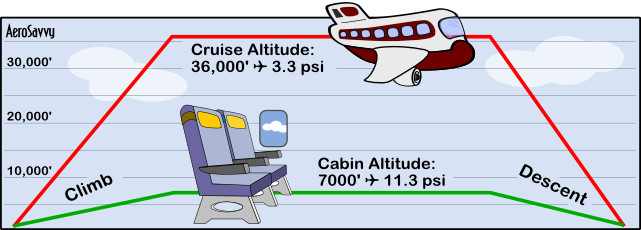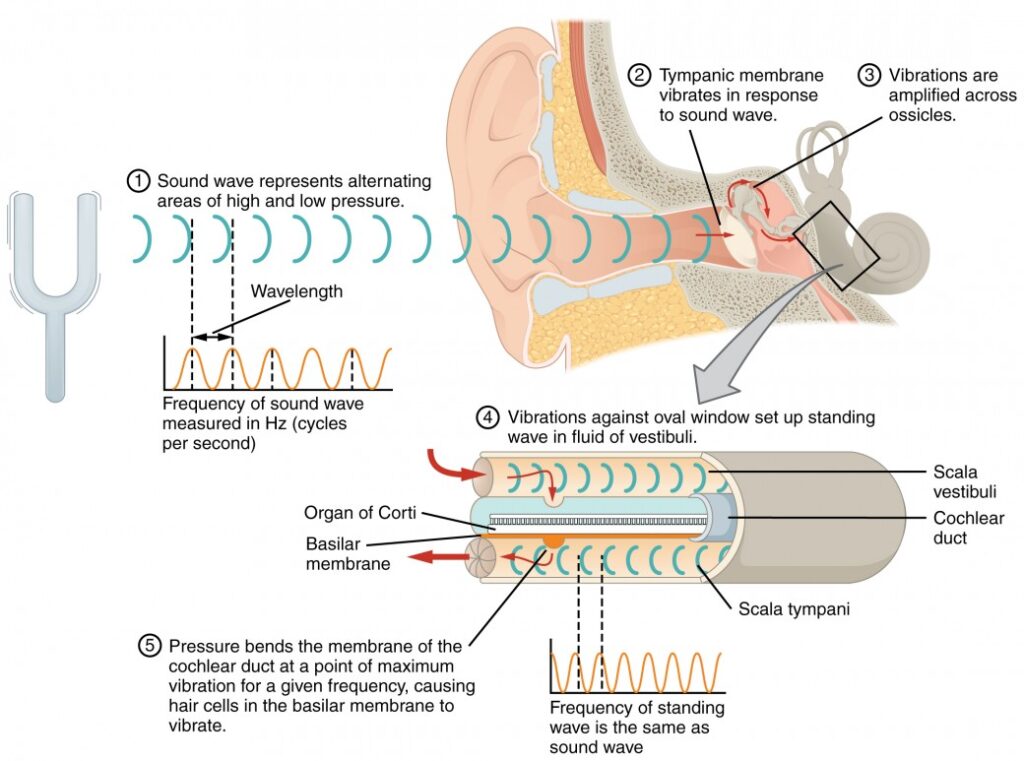Flying is one of the most convenient ways to travel, but for some people, it can come with an uncomfortable side effect: ear pain. This discomfort, often referred to as “airplane ear,” occurs when there is a difference in air pressure between the inside and outside of the ear. While this issue is temporary and usually harmless, it can cause significant discomfort during flights. Understanding the causes, recognizing the symptoms, and learning effective relief methods can make your flying experience much more pleasant.

Understanding Ear Pain During Flights
Ear pain during flights is primarily caused by changes in air pressure. When an airplane ascends or descends, the pressure in the cabin changes rapidly. These changes affect the middle ear, which is the part of the ear located behind the eardrum. The middle ear is connected to the back of the throat by a narrow tube called the Eustachian tube. This tube plays a crucial role in equalizing the pressure on both sides of the eardrum.
When the pressure outside the ear changes faster than the Eustachian tube can adjust, it creates an imbalance. This imbalance leads to discomfort or pain in the ears. The severity of the pain can vary depending on factors such as the individual’s anatomy, the speed of the pressure change, and any pre-existing conditions affecting the ears.
Why Does Air Pressure Change Affect the Ears?
The human body is designed to function optimally at sea level, where the air pressure is relatively stable. However, during a flight, the altitude changes rapidly, causing the air pressure to fluctuate. As the plane climbs, the air pressure decreases, and as it descends, the air pressure increases. These changes affect the ears because the Eustachian tube must work harder to maintain equilibrium.
In some cases, the Eustachian tube may not open quickly enough to equalize the pressure, leading to a vacuum-like sensation in the middle ear. This vacuum pulls the eardrum inward, causing pain and discomfort. Conversely, if the pressure outside the ear becomes greater than the pressure inside, the eardrum may bulge outward, resulting in similar symptoms.
Common Causes of Ear Pain During Flights
While changes in air pressure are the primary cause of ear pain during flights, several other factors can contribute to or exacerbate the problem. Understanding these causes can help you take preventive measures to minimize discomfort.
Narrow or Blocked Eustachian Tubes
Some individuals naturally have narrower Eustachian tubes, making it more difficult for them to equalize pressure. Additionally, conditions such as allergies, colds, or sinus infections can cause inflammation and blockage of the Eustachian tubes. When these tubes are blocked, they cannot function properly, increasing the likelihood of ear pain during flights.
Recent Ear Infections
People who have recently experienced an ear infection may be more susceptible to ear pain during flights. Infections can cause swelling and fluid buildup in the middle ear, which interferes with the normal functioning of the Eustachian tube. This makes it harder for the ear to adjust to changes in pressure, leading to increased discomfort.
Altitude Changes
While all flights involve altitude changes, certain routes or weather conditions may result in more rapid or extreme pressure fluctuations. For example, shorter flights or turbulent descents can put additional strain on the ears, making pain more likely.
Pre-Existing Medical Conditions
Individuals with medical conditions that affect the ears, nose, or throat may be more prone to experiencing ear pain during flights. Conditions such as chronic sinusitis, nasal polyps, or deviated septums can impair the Eustachian tube’s ability to regulate pressure effectively.
Symptoms of Ear Pain During Flights
The symptoms of ear pain during flights can vary from mild discomfort to severe pain. Recognizing these symptoms can help you identify the problem early and take steps to alleviate it.
Mild Discomfort or Fullness
One of the earliest signs of ear pain during flights is a feeling of fullness or pressure in the ears. This sensation is often described as having “clogged” ears. It occurs when the Eustachian tube is unable to equalize pressure quickly enough, leading to a buildup of pressure in the middle ear.
Sharp or Stabbing Pain
As the pressure imbalance worsens, the discomfort may escalate into sharp or stabbing pain. This pain is typically localized around the ear and may radiate to the jaw or temples. It can be particularly intense during takeoff and landing, when pressure changes are most rapid.
Hearing Difficulties
Pressure imbalances in the ear can also affect hearing. Some individuals may notice muffled or reduced hearing during flights. This occurs because the eardrum cannot vibrate properly when it is under pressure, impairing sound transmission.
Dizziness or Vertigo
In severe cases, ear pain during flights can lead to dizziness or vertigo. This happens when the pressure imbalance affects the inner ear, which plays a crucial role in maintaining balance. Dizziness can make it difficult to focus or perform tasks during the flight.
Tinnitus
Tinnitus, or ringing in the ears, is another potential symptom of ear pain during flights. This condition occurs when the pressure imbalance irritates the auditory nerve, leading to abnormal sounds such as ringing, buzzing, or hissing.
Relief Methods for Ear Pain During Flights
If you experience ear pain during flights, there are several techniques and remedies you can try to alleviate discomfort. These methods focus on helping the Eustachian tube equalize pressure more effectively.
Yawning or Swallowing
One of the simplest ways to relieve ear pain during flights is to yawn or swallow frequently. These actions activate the muscles that open the Eustachian tube, allowing air to flow in and out of the middle ear. Chewing gum or sucking on hard candy can also stimulate swallowing and provide relief.
Valsalva Maneuver
The Valsalva maneuver is a technique that involves gently blowing air out of the nose while keeping the mouth closed and pinching the nostrils shut. This action forces air into the Eustachian tube, helping to equalize pressure. However, it is important to perform this maneuver gently to avoid damaging the eardrum.
Toynbee Maneuver
Another effective technique is the Toynbee maneuver, which involves swallowing while pinching the nose closed. This method combines the benefits of swallowing and pressure equalization, making it a useful option for relieving ear pain.
Using Earplugs Designed for Flying
Specialized earplugs, often referred to as “flight earplugs,” can help reduce ear pain during flights. These earplugs are designed to regulate air pressure changes gradually, giving the Eustachian tube more time to adjust. They are particularly helpful for individuals who frequently experience ear pain during flights.
Staying Hydrated
Drinking plenty of water before and during the flight can help keep the Eustachian tube hydrated and functioning properly. Dehydration can cause the mucous membranes in the nose and throat to become dry and irritated, making it harder for the Eustachian tube to open and close as needed.
Avoiding Sleep During Takeoff and Landing
It is important to stay awake during takeoff and landing, as these are the times when pressure changes are most rapid. Sleeping can prevent you from actively managing ear pressure, increasing the risk of discomfort. If you need to rest, set an alarm to wake up before the plane begins its descent.
Preventive Measures for Ear Pain During Flights
In addition to relief methods, there are several preventive measures you can take to reduce the likelihood of experiencing ear pain during flights. These strategies focus on preparing your body and ears for pressure changes.
Use Nasal Sprays
If you have a cold, allergies, or sinus congestion, using a decongestant nasal spray before the flight can help reduce inflammation and open up the Eustachian tube. Be sure to follow the instructions on the packaging and consult a healthcare professional if you have any concerns.
Stay Upright During Takeoff and Landing
Sitting upright during takeoff and landing can help your ears adjust to pressure changes more easily. Leaning forward slightly may also provide additional relief by promoting better airflow through the Eustachian tube.
Consider Over-the-Counter Medications
Over-the-counter pain relievers, such as ibuprofen or acetaminophen, can help reduce ear pain during flights. These medications work by alleviating inflammation and reducing discomfort. However, it is important to use them as directed and consult a doctor if you have any underlying health conditions.
Consult a Healthcare Professional
If you frequently experience severe ear pain during flights despite trying various remedies, it may be worth consulting a healthcare professional. They can assess your condition and recommend personalized solutions, such as prescription medications or specialized treatments.





